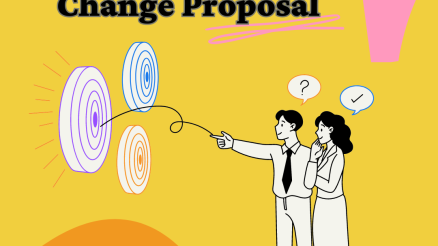Today the world is becoming diverse. And same holds true for organizations and workplaces. Having diverse people in the team brings us all together and strengthen our values.
Diverse team is more receptive to new ideas and implementation of change in the workplace.
Change and diversity are interlinked and help organizations to thrive and remain competitive in today’s rapidly evolving business landscape.
The purpose of this blog post is to provide a comprehensive guide on how to manage change and diversity in the workplace. The post aims to help organizations understand the importance of embracing change and diversity, and to provide practical tips for implementing and maintaining a culture of change and inclusiveness.
Let’s start reading
Definition of Change in the Workplace
Change in the workplace refers to any alteration to the status quo, whether it is a major transformation, transition or a minor improvement in operations. It involves reorganizing teams, launching new products, improving process and operations or adopting new technologies. Change can be brought about by internal or external factors, such as market competition, changes in customer needs, or shifts in the economy.
Definition of Diversity in the Workplace
Diversity in the workplace refers to the variety of differences between individuals in a company. This can include differences in race, ethnicity, gender, sexual orientation, age, religion, cultural background, and more. A diverse workplace is one in which these differences are valued and respected, and where employees feel a sense of belonging.
Change and diversity are integral components of a successful and thriving organization. By embracing change and promoting diversity, organizations can create a more dynamic and innovative workplace that leverages the strengths and perspectives of a diverse workforce.
Characteristic of Change in the Workplace
Change in the workplace happens in different forms and has different characteristics. Following are some key characteristics that explain change.
Dynamic: Change is constantly evolving and taking new forms. Organizations must be able to adapt and respond to changing circumstances in order to remain relevant and competitive.
Inevitable: Change is an inevitable part of organizational life. Whether it is driven by internal factors such as technology advancements or external factors such as market competition, change is a constant force that must be managed.
Unpredictable: The pace and nature of change can be difficult to predict. Organizations must be prepared for the unexpected and have contingency plans in place to respond to unforeseen changes.
Challenging: Change can be difficult for employees and organizations alike. It can cause stress, resistance, and uncertainty, and may require significant effort to implement.
Opportunistic: Despite the challenges, change also presents opportunities for growth and innovation. By embracing change and seeking out new opportunities, organizations can drive positive results and achieve their goals.
Continuous: Change is a continuous process, and organizations must continuously monitor and adapt to changes in their internal and external environments.
Necessary: Change is often necessary for organizations to remain competitive and relevant in a rapidly evolving business landscape. By embracing change and continuously improving, organizations can stay ahead of the curve and succeed in the long-term
Types of Diversity in the Workplace
The types of diversity in the workplace can include the following:
Ethnic and Racial Diversity: It refers to the differences in race and ethnicity that exist within a workplace. This can include differences in skin color, culture, and national origin.
Gender Diversity: It is about differences in gender identity and expression that exist within a workplace. This can include differences in gender, sexual orientation, and gender expression.
Age Diversity: There is always differences in age that exist within a workplace. This can include differences in life experiences, perspectives, and stages of career development.
Religious Diversity: People of different religious faith and beliefs work together in the workplace. This can include differences in religious traditions, values, and customs.
Cognitive Diversity: People has different thinking styles, problem-solving approaches, and communication preferences. This can include differences in learning styles, personalities, and perspectives.
Work-Life Balance Diversity: It refers to the differences in work-life balance needs that exist within a workplace. This can include differences in family responsibilities, health needs, and personal interests.
Socio-Economic Diversity: It is about the differences in socio-economic background that exist within a workplace. This can include differences in education, income, and access to resources.
It is important to note that these categories are not mutually exclusive, and that many individuals may belong to multiple groups.
Connection between Change Management and Diversity in the Workplace
Change management and diversity in the workplace are interconnected and interdependent concepts. Effective change management is critical to successfully implementing and integrating diversity in the workplace. Diversity initiatives often involve significant changes to the workplace culture, and to the way employees work and interact with each other. In order to be successful, these changes must be effectively managed, communicated, and embraced by the workforce.
On the other hand, embracing diversity and inclusiveness in the workplace can be a driver of change and improvement. A diverse and inclusive workplace can foster innovation and creativity, and lead to new perspectives, approaches, and solutions to challenges and problems. This can drive continuous improvement, and help organizations to adapt to changing business conditions and customer needs.
Therefore, change management and diversity are mutually reinforcing, and organizations that effectively manage change and embrace diversity are better positioned to succeed in today’s rapidly changing business environment. By effectively managing change and promoting diversity in the workplace, organizations can create a dynamic and inclusive workplace culture, and build a strong foundation for long-term success
Benefits of Embracing Change and Diversity in the Workplace
The benefits of embracing change and diversity in the workplace can include the following:
Increased Innovation: A diverse workforce brings a wide range of perspectives and experiences to the table, which can lead to increased creativity and innovation.
Improved Decision-Making: Diverse perspectives can help organizations make more informed and well-rounded decisions, leading to better outcomes.
Enhanced Reputation: Companies that embrace diversity and inclusiveness are seen as more attractive to customers, employees, and investors, which can enhance the organization’s reputation and improve brand loyalty.
Better Employee Engagement: A workplace that values and respects diversity can lead to increased employee satisfaction and engagement, which can drive better performance and productivity.
Improved Problem-Solving: A diverse workforce can help organizations identify and solve problems from different angles, leading to more creative and effective solutions.
Access to a Wider Talent Pool: By embracing diversity, organizations can access a wider pool of talent and find the best candidates for open positions, regardless of background or identity.
Increased Adaptability: Organizations that are open to change and diversity are better able to adapt to shifts in the marketplace and respond to changing customer needs.
06 Steps to manage change and ensure diversity in the Workplace
Implementing diversity and change in the workplace involves several key steps, including:
1. A formal diversity policy
Organizations should create a formal policy that outlines the importance of diversity and inclusiveness, and sets clear expectations for all employees. The diversity policy should be concise and easy to understand. It should outline the organization’s commitment to promoting diversity and inclusion, and provide guidelines for employees on how to behave and interact with each other. This policy guides employees about their role and responsibilities in promoting diversity and inclusion in the workplace.
2. Zero-tolerance policy
A zero-tolerance policy with regard to diversity in the workplace means that an organization will not tolerate any form of discrimination, harassment, or bias based on characteristics such as race, gender, religion, sexual orientation, age, or any other protected characteristic. This type of policy is designed to create a safe and respectful workplace for all employees, and ensure that everyone is treated fairly and with dignity.
With a zero-tolerance policy in place, an organization will have strict consequences for any behavior that violates the policy, such as termination of employment, disciplinary action, or other consequences as appropriate. The goal of a zero-tolerance policy is to send a clear message that discrimination and harassment will not be tolerated, and to create a culture of inclusiveness and respect.
3. Training and education
It’s important that employees should be given training and educational opportunities to learn about diversity and inclusiveness, and understand the impact these concepts have on the workplace.
Diversity training should be mandatory for all employees, regardless of their level or role within the organization. This will help to ensure that everyone is aware of their role and responsibilities in promoting diversity and inclusion in the workplace.
4. Open communication
Foster an environment of open and respectful communication, where employees feel comfortable sharing their experiences and perspectives, and where all voices are heard and valued. Organizations should create opportunities for employees to provide feedback, share their thoughts and experiences, and contribute to the conversation on diversity and inclusion.
5. Diversity in hiring
Implement recruitment practices that promote diversity and ensure that the organization is attracting and retaining a diverse workforce. Organizations should broaden the pool of applicants by reaching out to a diverse range of sources, including community organizations, professional associations, and colleges and universities.
6. Monitoring and tracking progress
Regular monitoring and tracking allows organizations to identify areas for improvement, and to develop and implement strategies to address any challenges or obstacles to diversity and inclusion. Regular monitoring and tracking encourage accountability and helps to ensure that everyone involved in promoting diversity and inclusion is aware of their responsibilities and is working towards the same goals.
Final Words
Change is an inevitable part of business, and organizations must be prepared to embrace change and to adapt to new challenges and opportunities. Diversity, on the other hand, brings a variety of perspectives, ideas, and experiences to the workplace, and it is essential for organizations to embrace and celebrate diversity in all its forms.
Organizations can prepare for change and diversity by identifying the need for change, developing a plan for change, and creating a diverse and inclusive workplace. Diversity can be encouraged by implementing a diversity policy, providing diversity training to employees, encouraging open communication, and promoting diversity in hiring. Regular monitoring and tracking of progress on diversity initiatives is also important to measure progress, identify areas for improvement, and foster a positive workplace culture



